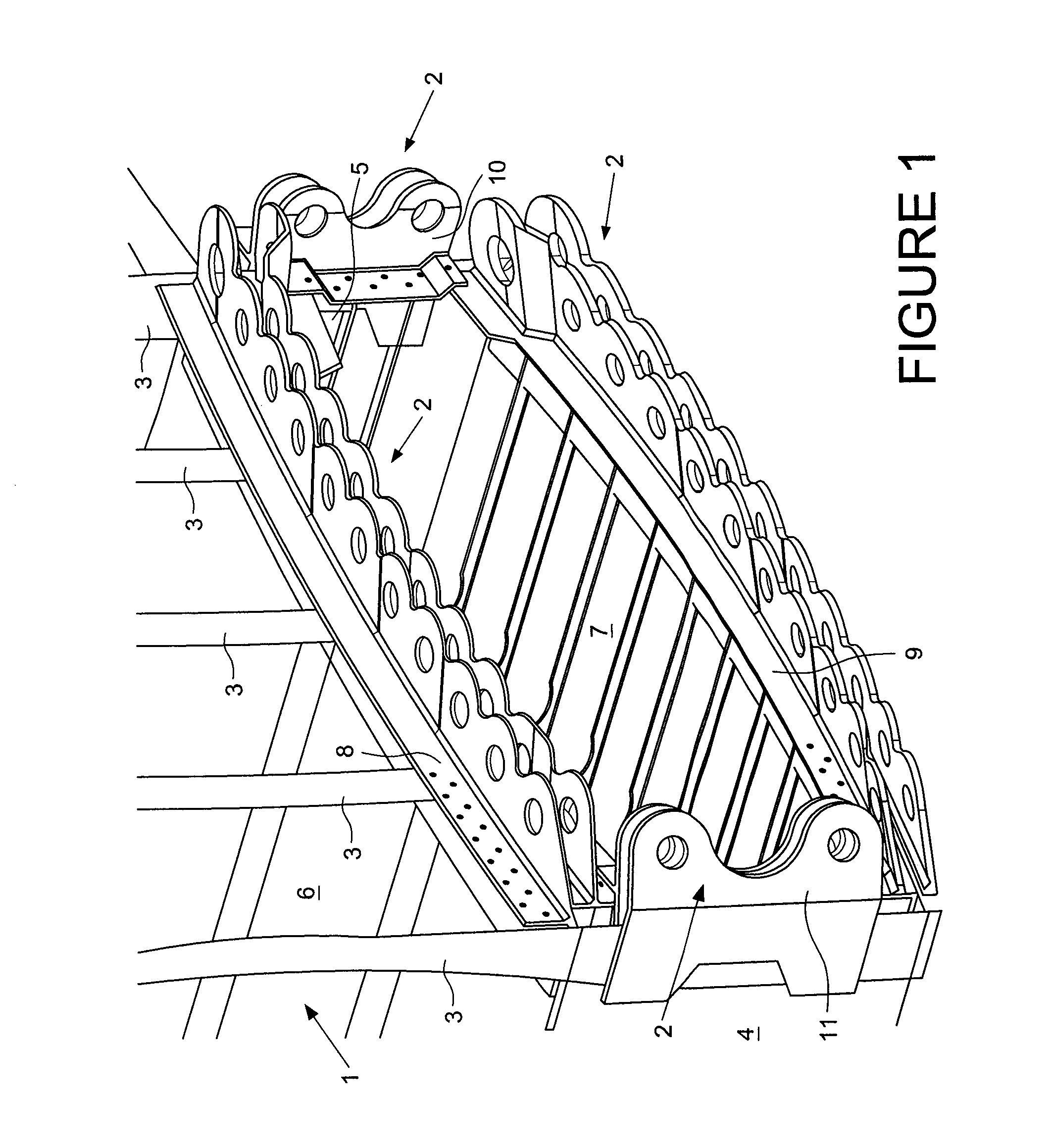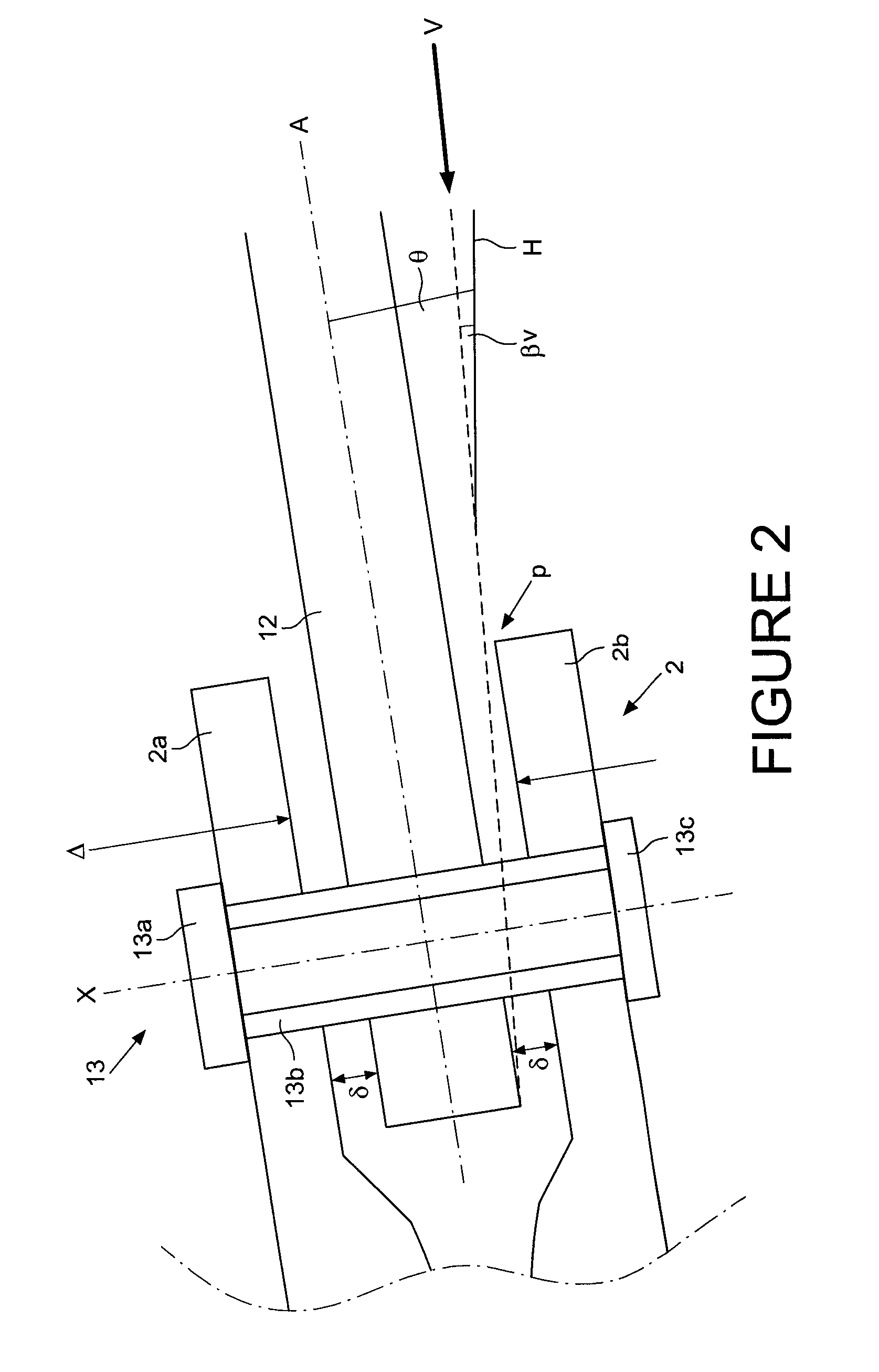Aircraft joint
a technology for fuselage joints and aircraft, applied in the field of aircraft fuselage joints, to achieve the effect of easing assembly problems
- Summary
- Abstract
- Description
- Claims
- Application Information
AI Technical Summary
Benefits of technology
Problems solved by technology
Method used
Image
Examples
Embodiment Construction
[0027]FIG. 1 shows a partial view of a centre wing box structure 1 having a series of double lugs 2 provided around the entire circumference of the centre wing box structure 1 prior to connection to an aircraft wing (not shown) to form a wing-fuselage joint. The centre wing box structure 1 is connected to fuselage structural frames 3 which run around the circumference of the fuselage. The centre wing box structure 1 comprises a front spar 4, a rear spar 5, an upper cover 6 and a lower cover 7. At each end of the centre wing box structure 1 there is provided a centre wing box rib 19 (not shown in FIG. 1 for clarity, but shown in FIGS. 5a, 5b and 6).
[0028]The upper double row of lugs is formed in an upper “cruciform” component 8 which is attached by its inboard flange to the centre wing box upper cover 6; by its upper flange to the fuselage structural frames 3; and by its lower flange to the centre wing box rib 19 (not shown in FIG. 1). The upper double row of lugs 2 is formed in firs...
PUM
| Property | Measurement | Unit |
|---|---|---|
| relative movement | aaaaa | aaaaa |
| circumference | aaaaa | aaaaa |
| tension | aaaaa | aaaaa |
Abstract
Description
Claims
Application Information
 Login to View More
Login to View More - R&D
- Intellectual Property
- Life Sciences
- Materials
- Tech Scout
- Unparalleled Data Quality
- Higher Quality Content
- 60% Fewer Hallucinations
Browse by: Latest US Patents, China's latest patents, Technical Efficacy Thesaurus, Application Domain, Technology Topic, Popular Technical Reports.
© 2025 PatSnap. All rights reserved.Legal|Privacy policy|Modern Slavery Act Transparency Statement|Sitemap|About US| Contact US: help@patsnap.com



